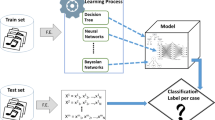Abstract
India is known for its culture of traditional folk music. Folk music represents the identity of different Indian regions and festival celebrations by people in those regions. Many popular Bollywood songs are based on folk music. There is a wide scope to apply artificial intelligence in this domain. However, to the best of our knowledge, there has been no availability of any audio dataset which represents Indian folk songs from various regions. In this work, we introduce a novel audio dataset of 307 folk songs from five major regions of India, namely Assamese, Marathi, Kashmiri, Kannada and Uttarakhandi. A pre-trained ResNet-based model has been used on mel-spectrogram-based audio representations for classifying a given folk song into one of these five regions. Results indicate that mel-spectrogram-based representation provides better performance in comparison with traditional spectrogram and short-term spectral feature-based representations.
Access this chapter
Tax calculation will be finalised at checkout
Purchases are for personal use only
Similar content being viewed by others
References
Arronte-Alvarez A, Gomez-Martin F (2019) An attentional neural network architecture for folk song classification. arXiv e-prints, page arXiv:1904.11074
Tzanetakis G, Cook P (2002) Musical genre classification of audio signals. IEEE Trans Speech Audio Proc 10(5):293–302
Bassiou N et al (2015) Greek folk music classification into two genres using lyrics and audio via canonical correlation analysis. In: International symposium on image and signal processing and analysis, pp 238–243
Bergstra J, Casagrande N, Erhan D, Eck D, Kegl B (2006) Aggregate features and adaboost for music classification. Mach Learn pp 473–484
Boot P, Volk A, De Bas W, Haas (2016) Evaluating the role of repeated patterns in folk song classification and compression. J New Music Res 45(3):223–238
Bozkurt B, Srinivasamurthy A, Gulati S, Serra X (2018) Saraga: research datasets of Indian art music
Boot P, Volk A, da Haas WB (2016) Evaluating the role of repeated patterns in folk song classification and compression. J New Music Res 45(3):223–238
Chowdhuri S (2019) Phononet: multi-stage deep neural networks for raga identification in hindustani classical music. In: Proceedings of the 2019 on international conference on multimedia retrieval, pp 197–201
Davis S, Mermelstein P (1980) Comparison of parametric representations for monosyllabic word recognition in continuously spoken sentences. IEEE Trans Acoustics Speech and Sig Proc 28(4):357–366
Gulati S, Serrà Julià J, Ganguli KK, Sentürk S, Serra X (2016) Time-delayed melody surfaces for rāga recognition. In: Devaney J, Mandel MI, Turnbull D, Tzanetakis G (eds) ISMIR 2016. Proceedings of the 17th international society for music information retrieval conference; 2016 Aug 7-11, New York City (NY).[Canada]: ISMIR; 2016. pp 751–7. International Society for Music Information Retrieval (ISMIR), 2016
Heshi R, Suma SM, Koolagudi SG, Bhandari S, Rao KS (2016) Rhythm and timbre analysis for carnatic music processing. In: Nagar A, Mohapatra DP, Chaki N (eds) Proceedings of 3rd International conference on advanced computing, networking and informatics. Springer India, New Delhi, pp 603–609
Khoo SS (2013) The single hidden layer neural network based classifiers for han chinese folk songs. PhD thesis, Swinburne University of Technology
Khoo S, Man Z, Cao Z (2012) Automatic han chinese folk song classification using the musical feature density map. In: 6th international conference on IEEE, pp 1–9
Khoo S, Man Z, Cao Z (2013) German versus austrian folk song classification. In: 8th IEEE conference on IEEE industrial electronics and applications (ICIEA), pp 131–136
Salamon J, Gomez E (2012) Melody extraction from polyphonic music signals using pitch contour characteristics. IEEE Trans Audio Speech Language Proc 20(6):1759–1770
Juan L, Jing L, Jianhang D, Xi Z, Xinyu Y (2019) Regional classification of chinese folk songs based on crf model. Multimedia Tools Appl 78(9):11563–11584
Liu Y, Wei L, Wang P (2009) Regional style automatic identification for chinese folk songs. In: 2009 WRI world congress on computer science and information engineering, vol 7, pp 5–9
Liu Y, Xu JP, Wei L, Tian Y (2007) The study of the classification of Chinese folk songs by regional style. In: International conference on semantic computing (ICSC 2007). IEEE, pp 657 – 662
Neubarth K, Conklin D (2016) Contrast pattern mining in folk music analysis. Comput Music Anal 393–424
Pandey G, Mishra C, Ipe P (2003) Tansen: a system for automatic raga identification. In: IICAI, pp 1350–1363
Peter Van Kranenburg AV, de Bruin M (2017) Documenting a song culture: the dutch song database as a resource for musicological research. Int J Digit Libr
Juan L, Jing L, Jianhang D, Xi Z, Xinyu Y (2019) Regional classification of chinese folk songs based on crf model. Multimedia Tools Appl 78(9):11563–11584
Salamon J, Gomez E (2012) Melody extraction from polyphonic music signals using pitch contour characteristics. IEEE Trans Audio Speech Language Proc 20(6):1759–1770
Sridhar R, Geetha TV (2008) Music information retrieval of carnatic songs based on carnatic music singer identification. In: International conference on computer and electrical engineering ICCEE 2008. IEEE, pp 407–411
Davis S, Mermelstein P (1980) Comparison of parametric representations for monosyllabic word recognition in continuously spoken sentences. IEEE Trans Acoustics Speech and Sig Proc 28(4):357–366
Acknowledgements
Authors acknowledge the insights provided by several people during discussions on this folk music research. We also thank to reviewers for their comments to improve the paper.
Author information
Authors and Affiliations
Corresponding author
Editor information
Editors and Affiliations
Rights and permissions
Copyright information
© 2021 The Author(s), under exclusive license to Springer Nature Singapore Pte Ltd.
About this paper
Cite this paper
Patel, A., Shah, A., Gor, K., Mankad, S.H. (2021). IFSC: A Database for Indian Folk Songs Classification. In: Biswas, A., Wennekes, E., Hong, TP., Wieczorkowska, A. (eds) Advances in Speech and Music Technology. Advances in Intelligent Systems and Computing, vol 1320. Springer, Singapore. https://doi.org/10.1007/978-981-33-6881-1_15
Download citation
DOI: https://doi.org/10.1007/978-981-33-6881-1_15
Published:
Publisher Name: Springer, Singapore
Print ISBN: 978-981-33-6880-4
Online ISBN: 978-981-33-6881-1
eBook Packages: Intelligent Technologies and RoboticsIntelligent Technologies and Robotics (R0)




